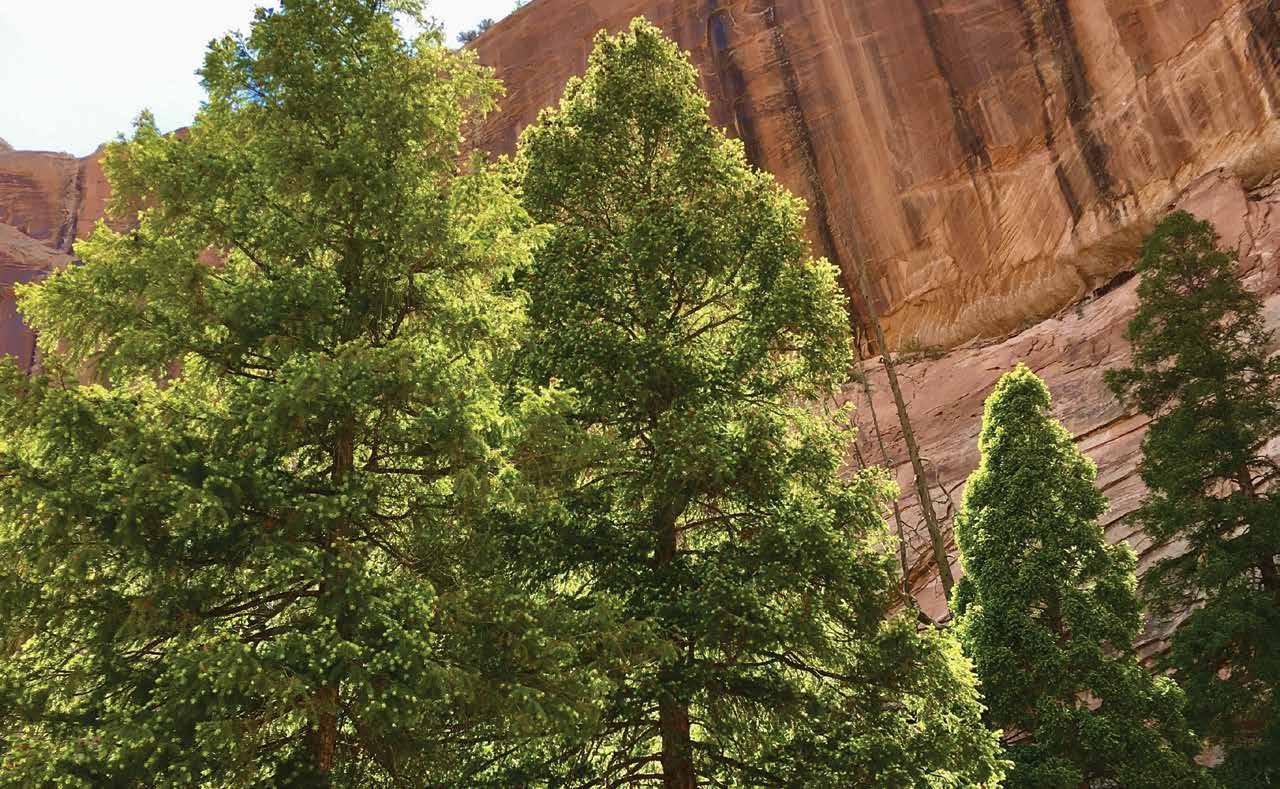While not in the Moab valley proper, a small but very special grove of native trees near the famous Shafer Trail in Canyonlands National Park yields clues to the region’s climate history. Tight switchbacks are bounded by steep rocky walls on one side and abrupt drop-offs on the other, and views include impressive sandstone spires and native vegetation dominated by Pinyon and Juniper trees. Bikers and drivers enjoy this route, as do sightseers looking down on the hairpin turns unspooling below a scenic overlook. It might take a sharp observer to notice a cluster of trees unlike the desert-adapted Pinyons and Junipers. In a shaded alcove along the route, Douglas fir trees tower on the steep slope, a “relict stand” left over from a previous climate. “Several thousand years ago at the tail end of the last glacial period, this was a much wetter and cooler location,” explains National Park Ranger Tim Giller in a park-sponsored educational video about the trees. Indicating the Douglas firs in the background, he goes on, “This north-facing alcove and a substantial spring in the Navajo sandstone provide a relatively cool and damp micro-environment.” Giller notes that Douglas firs are also found at higher elevations in the La Sal Mountains, often alongside species like aspen trees, 20 miles away.
Pinyon
Juniper
The relict stand, the last hold-out against a warming, drying climate, may not be able to resist much longer. “The Colorado Plateau is experiencing accelerated warming and drying associated with global climate change,” Giller notes in the video. “The climate trend may mean that even this refuge is not enough to sustain these trees.” Park Administrator Karen Garthwait has worked in Moab’s national parks for 14 years, and she continues to appreciate the history evident in the trees. “Just last weekend I camped out, and the next morning I realized that the Pinyon tree I’d slept beneath had a really old ‘cat-face’ on it—a scar marking where someone had collected pine sap long ago,” Garthwait says. Pinyon pitch was used by Native Americans for medicinal purposes, for glue or paint, or for waterproofing surfaces. Many of the conifers in the area, Garthwait says, are ancient, despite their diminutive size, with some as old as 500 years. “I love being reminded of trees’ longevity as witnesses,” she says. “Their age helps me put all our human foibles into perspective— not just because of what challenges the trees have withstood, but also because of the generations of people who have lived their lives in their shade. n
Top: In a north-facing alcove near the top of the Shafer Trail in Canyonlands National Park, growing many miles from their nearest siblings, is a small relict stand of Douglas firs, a remnant of a large forest that existed during a time when the climate was cooler and wetter. [Photo courtesy of National Park Service]
18
MOAB AREA REAL ESTATE MAGAZINE October–November 2020
Small photos: Martha Marks©adobestock.com, es3n©shutterstock.com
RELICT DOUGLAS FIR GROVE






